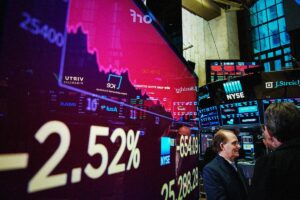As global financial markets brace for the Federal Reserve’s upcoming policy decisions, the U.S. dollar remains firm, maintaining its strength against major currencies. Meanwhile, the automotive sector is buzzing with optimism, driven by reports of potential collaboration between Honda and Nissan. These developments underscore the interplay between monetary policy and industry dynamics in shaping market sentiment.

Dollar Holds Steady Before Fed Decision
The U.S. dollar continues to display resilience ahead of the Federal Reserve’s final policy meeting for the year. Investors are closely monitoring the Fed’s stance on interest rates, inflation, and economic growth. While recent data suggests a cooling inflation trend, the robust labor market and steady consumer spending keep the door open for hawkish commentary from policymakers.
Market analysts predict that the Fed will likely hold interest rates steady but reiterate its commitment to achieving its 2% inflation target. The dollar index, a measure of the currency’s strength against a basket of peers, has shown minimal volatility, reflecting cautious optimism among traders. The euro and yen have slightly weakened, while emerging market currencies remain under pressure as investors prioritize safe-haven assets.
Automotive Stocks Surge on Honda-Nissan Talks
In a separate development, automakers Honda and Nissan are reportedly in discussions to strengthen their collaboration. While details remain scarce, insiders suggest that the talks could lead to joint ventures in electric vehicle (EV) development, battery production, and autonomous driving technologies. Both companies have faced mounting pressure to accelerate their EV strategies as governments worldwide push for stricter emissions standards.
The news has sparked a rally in automotive stocks, with Honda and Nissan’s shares experiencing notable gains in Tokyo trading. The broader automotive sector also benefited, as investors anticipate that the collaboration could set a precedent for similar partnerships across the industry. Analysts believe that pooling resources and expertise could help both automakers compete more effectively with global EV leaders like Tesla and BYD.
Broader Implications for Markets
The intersection of a strong dollar and a thriving automotive sector highlights contrasting dynamics in the global economy. On one hand, the dollar’s strength could pose challenges for U.S. exporters, making their goods more expensive in international markets. On the other hand, potential collaborations like Honda-Nissan signal that industries are proactively adapting to structural changes, such as the shift to sustainable mobility.
The Fed’s policy decisions in the coming days will likely set the tone for global markets heading into 2025. A stable monetary environment could provide automakers and other sectors with the confidence needed to pursue ambitious growth initiatives.
Conclusion
As the Federal Reserve prepares to unveil its policy outlook and automakers explore transformative partnerships, financial markets remain at a crossroads. The dollar’s firmness reflects investor caution, while the Honda-Nissan talks inject a dose of optimism into the automotive sector. Together, these developments paint a complex picture of an evolving global economy, where innovation and stability remain key drivers of progress.



